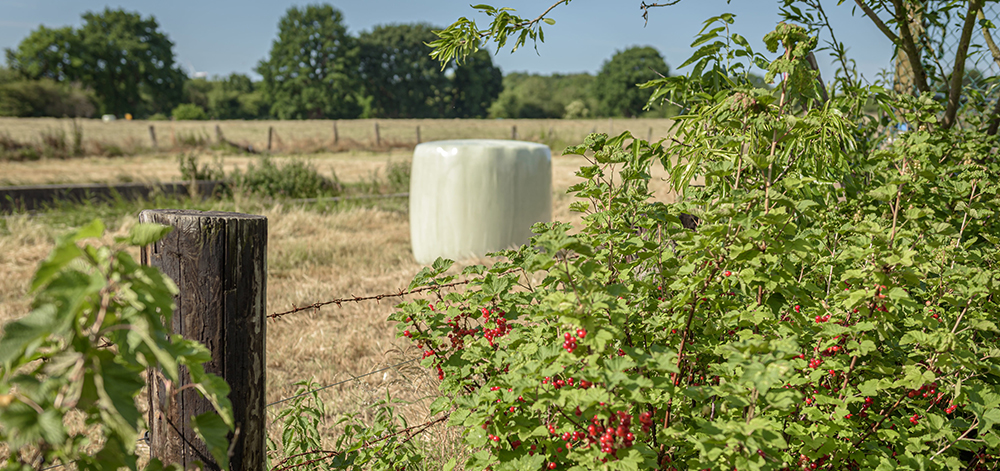8 Tips to get started with quality Balage
With balage proving to be such a valuable supplementary feed for the sustainable future of farming and the economic advantages it provides for farmers and ranchers, we’ve put together 8 starter tips to make it even easier to transition from dry hay to balage.

1. When should you cut balage?
Aim for less than 10% seed head emergence, as you’ll yield much higher energy and protein levels than mature, stemmy grass. The younger leafy pasture is easier to pack into a well-consolidated bale. This can make way for an extra cut each season
2. Knives or no knives?
Season can vary wildly if the crop is dry or stemmy it is recommended running knives in the baler and chopping the forage will help make tighter bales that hold their shape really well. For wetter, denser or more leafy crops we recommend removing the baler knives to ensure the bale holds its shape better
3. Soft centre or hard centre bales?
Although tight centred bales can be harder to feed out (except with Chainless bale feeders) the tighter bales are packed the less chance of mould developing or yeast growing which results in a better bale. Running a variable chamber baler gives you a tighter bale with more consistent density which excludes at much air as possible. A tight bale will reduce the number of bales you need to transport, store and handle
4. When is the best time to wrap bales?
If baling on stalky fields it’s best to transport the bales to their storage location before wrapping. For better quality silage, its best to minimise the time between baling and wrapping. You’ll notice that many balers now have integrated wrappers to reduce the time between baling and wrapping not to mention an extra pass in the field.
5. How many layers of wrap?
You should aim for a minimum of 6 layers wrap. The extra cost of the wrap is more than paid for by the improvement in the quality of the silage. Always remember that individually wrapped bales have more layers on the flat ends that in the rounds, so it’s best to store balage bales on their flats for extra protection against wrap damage.
6. Are inoculants worth it?
Absolutely! Inoculants reduce the chance of mould and help improve fermentation, reducing DM losses and you cows love it. We recommend using a silage inoculant irrespective of crops type or maturity. Inoculants can be purchase from companies such as Pioneer, or Nutritech and these companies often have experts on the team who can advise or the right type of inoculant for your crop
7. How to minimise wrap damage?
Wrap damage it very costly allowing air into a bale will start to grow mould. Using a well proven set of Softhands for handling and stacking bales is one way to minimise the costly wrap damage. Some wrapped bale handlers unlike Hustler Softhands require a skilful operator to ensure bales aren’t pinched or torn when handling. Using bait stations and fencing off a the storage location from cattle can also prevent costly damage to wrapped bales.
8. How much should you feed at a time?
Feeding just the right amount that your cattle will consume will save balage and eliminate trampling and deterioration. Using a quality Hustler bale feeder allows operators to limit feed the exact amount required saving the rest for the next days feeding. Because the remaining part of the bale is still tightly packed only the outer layer is subject to spoilage if it’s not feed out over the next few days. Using a calculator like this will help with your feed budgeting Supplement Price Calculator.


























